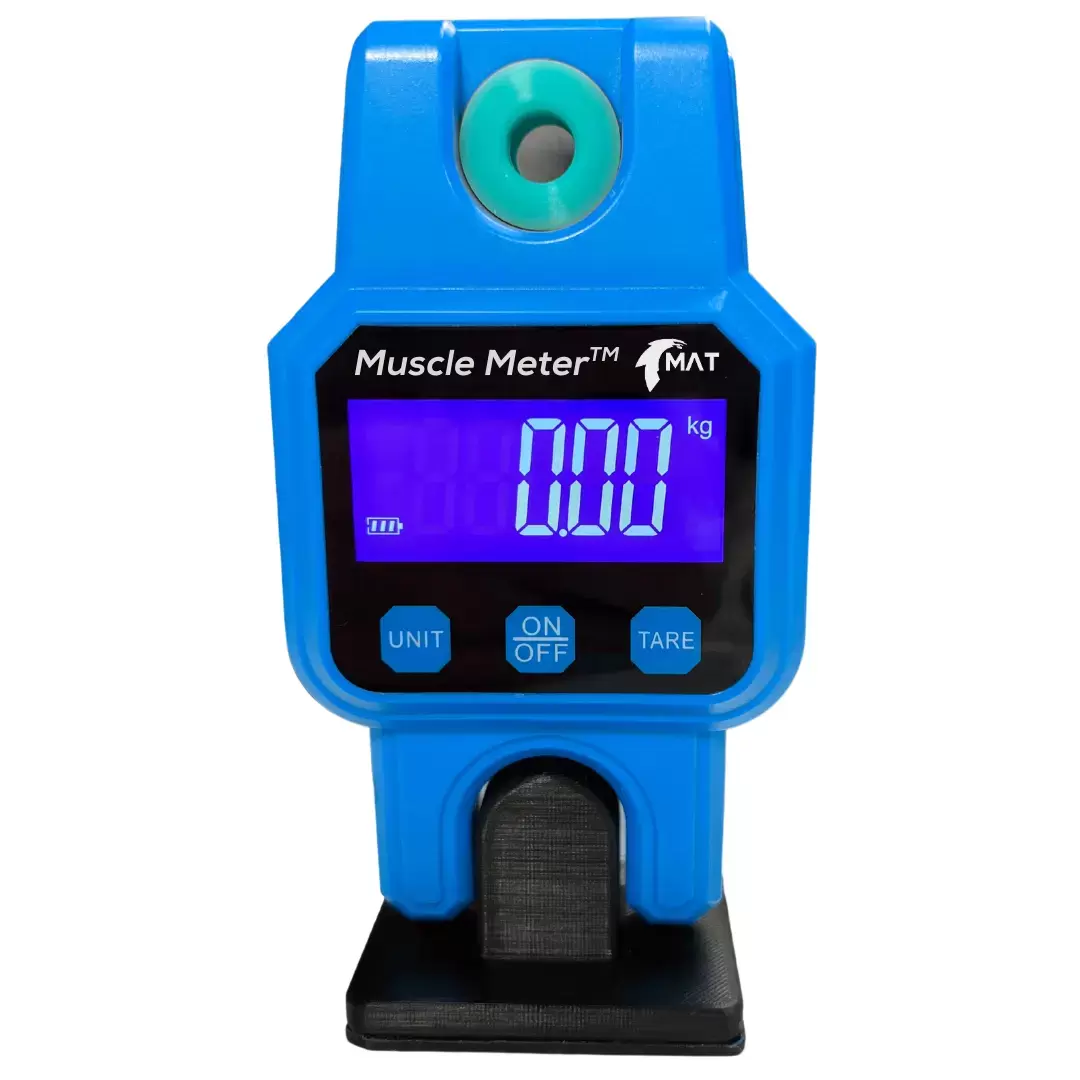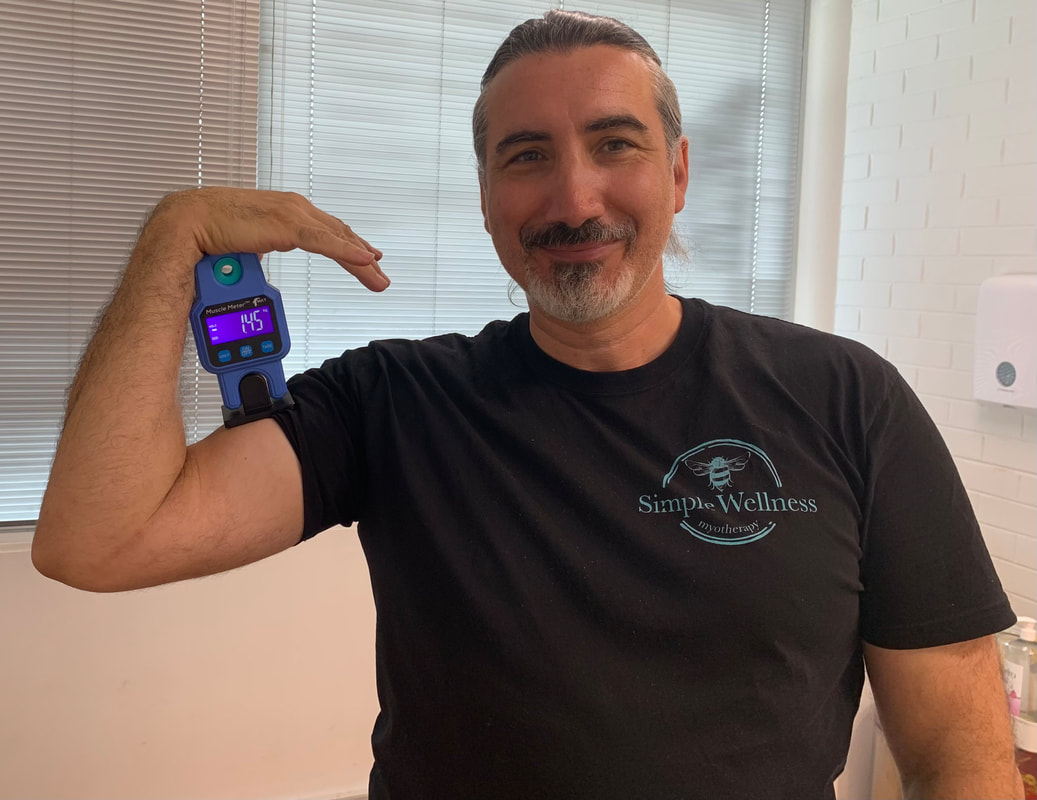|
By Peter Pascalis, Clinical Myotherapist Want to know if your painful side is weaker, and how much weaker so you can work on it? Thats what the MAT Muscle Meter lets us measure!
The MAT muscle meter - why we use these assessment tools? In our clinic we see patients daily who experience some change from their "normal" state. People will seek our advice and treatment for their ailments because they don't want to rely on medications or they don't want to normalise their pain. Regardless of how acute or chronic these conditions are, assessment of the dysfunction requires measurement if we are to conclude on a most likely diagnosis and be able to realistically set our treatment goals. For example when you come in with neck pain we will assess the range of motion available to you before the onset of symptoms, whether it be tightness of muscles or pain at a certain range of movement. These markers enable us to form a baseline from which we can measure improvements in those specific impairments. Measurement of factors like range of motion or strength can be estimated, and in most cases this could be enough, however if we want to get really precise on our measurements we have access to some great tools, like the MAT Muscle Meter! How do we know that our treatments have been effective? We could certainly ask the question and if all things have gone well we would be told that you're feeling great and life couldn't be better! At least that is what we'd both be working towards. Recovery from injury or pain isn't always so easily and quickly measured by our immediate experience of symptom relief. We therefore need some data on what has changed following our treatments to know that we are tracking in the right direction for the long term resolution of your pain or symptoms. Many devices exist that can help us as clinicians to get the most accurate data on pain or dysfunction by measuring for change before and after treatment. Much of that information will guide our treatments. The most simple version of this is the classic "how bad is your pain on a scale of 1-10?" which uses a number scale to rate your pain. Before treatment its a 7/10, and afterwards you report a 2/10? We call that a win! But how can we measure those wins even more precisely? As pain and tension can be multifactoral we eliminate the guesswork by supporting our claims with confirmation that our treatments are effective both reassuring us and our clients. The muscle meter tester is one example of a device that we can use to measure muscle strength, range of motion, and threshold to pain. All these variables when tested and changed in the positive will reassure us that we are well on the way to long term resolution of your symptoms. By measuring muscle strength we can prescribe exercises that aim to build strength equally in both sides of the body, when unequal it can be an underlying cause of dysfunction. Measuring range of motion on the symptomatic side tells us if we have restored range to its pre-injured level. Pain pressure threshold tells us if painful points otherwise known as trigger points or muscle knots have been improved. Although we can certainly gauge treatment effects in terms of seeing and hearing about those changes, confirming that our treatments have been successful by directly measuring those effects can be satisfying for both clinician and patient alike. Want me to measure your strength as part of your next treatment? Book in and ask me about the MAT Muscle Meter! |
Meet Our Team
We have a team of great practitioners available 7 days a week at our Rowville clinic. Archives
July 2024
Categories
All
|
Got a question about Myotherapy?
Contact Mel by phone, email or Facebook
|
Simple Wellness Myotherapy & Remedial Massage Clinic
Shop 12B 150 Kelletts Rd Rowville VIC 3178 |
Phone us on
03 8204 0970 |



 RSS Feed
RSS Feed